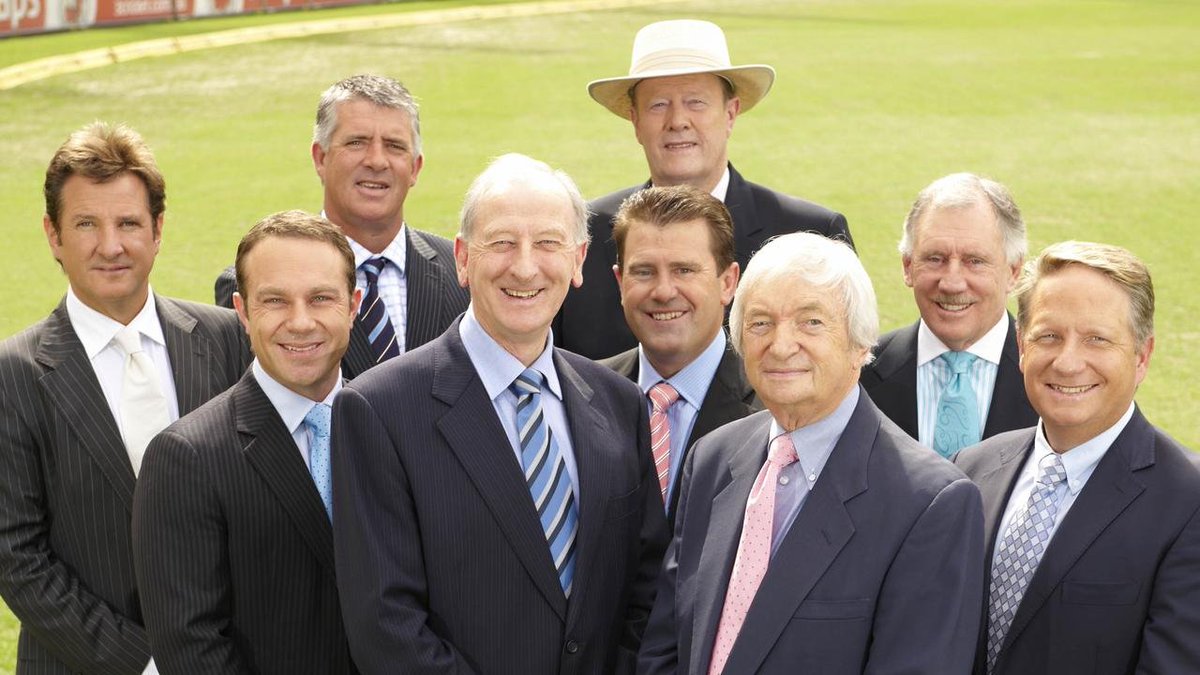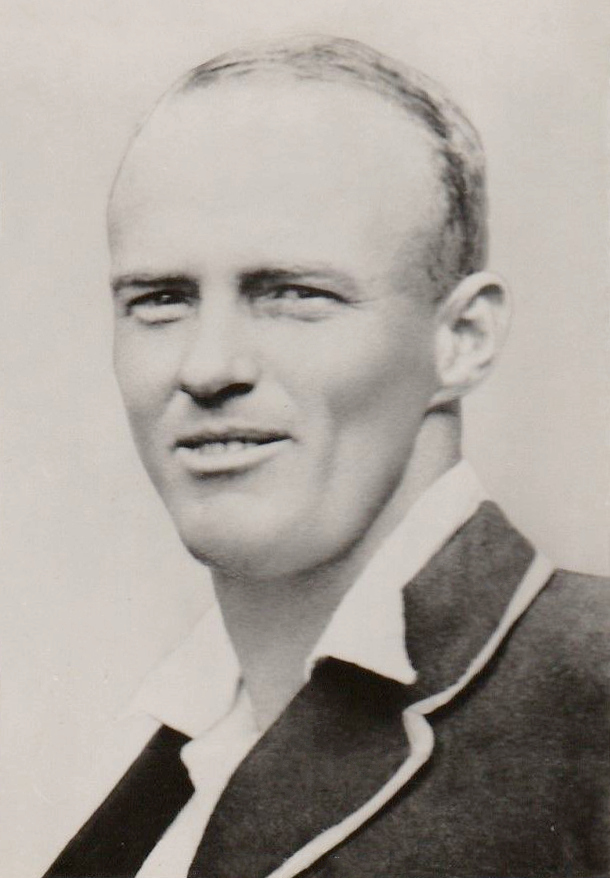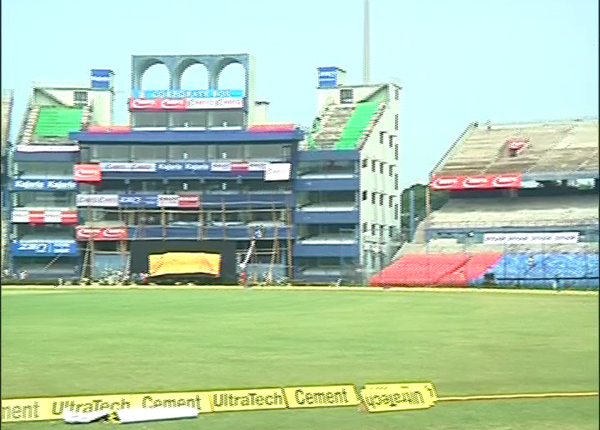
Cricket Australia has discussed switching broadcast rights back to Channel 9.
I was obviously excited. Then @rickeyrecricket asked me why a some of us found the news exciting.
It is difficult to explain, but there is no harm trying.
+
I was obviously excited. Then @rickeyrecricket asked me why a some of us found the news exciting.
It is difficult to explain, but there is no harm trying.
+

And I have a feeling that a lot of 1980s cricket fans will agree.
Let me first explain what watching cricket on Doordarshan used to be like – when the antenna worked, anyway.
There was one channel, where everything had to be crammed in.
+
Let me first explain what watching cricket on Doordarshan used to be like – when the antenna worked, anyway.
There was one channel, where everything had to be crammed in.
+
They used to interrupt coverage abruptly for news, University Grants Commission programmes, live telecast of the Prime Minister inaugurating random institutes, and more.
But we still waited, because we knew that this was all we were going to get.
+
But we still waited, because we knew that this was all we were going to get.
+
Live telecast was still better than waiting for the 7 PM news or, worse, next day's newspaper.
Radio was always an option, but television had *pictures*. And even radio had hourly news.
But how was the telecast – when it happened, that is – actually like?
+
Radio was always an option, but television had *pictures*. And even radio had hourly news.
But how was the telecast – when it happened, that is – actually like?
+
Until the mid-1980s cameras were placed on one end of the ground.
This meant that we got to watch half the overs from behind the batsman.
There was no close-up during action replays.
The ball was a blur when someone of decent pace bowled.
+
This meant that we got to watch half the overs from behind the batsman.
There was no close-up during action replays.
The ball was a blur when someone of decent pace bowled.
+
The camera sometimes failed to follow the ball when it left the vicinity of the pitch.
When they did, the quality of the feed was so poor that you had to assume the ball's journey based on the fielder's movement.
In those days, DD used to charge BCCI, not the other way round.
+
When they did, the quality of the feed was so poor that you had to assume the ball's journey based on the fielder's movement.
In those days, DD used to charge BCCI, not the other way round.
+
And they provided pathetic coverage.
We still watched cricket on Doordarshan for two reasons.
First, there was no other option.
And secondly, we did not have an idea what world-class live telecast of cricket could be like.
+
We still watched cricket on Doordarshan for two reasons.
First, there was no other option.
And secondly, we did not have an idea what world-class live telecast of cricket could be like.
+
I was too young to savour India's triumph in the 1984-85 Benson & Hedges World Series Championship.
I understood wins and defeats and match scores and runs and wickets, but I was still learning.
But I did pick up a thing or two over the course of the next year.
+
I understood wins and defeats and match scores and runs and wickets, but I was still learning.
But I did pick up a thing or two over the course of the next year.
+
I was somehow ready when India returned to Australia.
They telecast the India matches of the Benson & Hedges World Series Cup live.
I shall never forget my first proper memory of watching cricket from Australia.
Cricketers were in coloured attire, pads included.
+
They telecast the India matches of the Benson & Hedges World Series Cup live.
I shall never forget my first proper memory of watching cricket from Australia.
Cricketers were in coloured attire, pads included.
+
They were playing with a white ball.
The players had zinc oxide smeared on their faces.
This is important, for we spent hours in school discussing exactly what it was.
These things had been there the previous year as well, but that was a marquee tournament.
+
The players had zinc oxide smeared on their faces.
This is important, for we spent hours in school discussing exactly what it was.
These things had been there the previous year as well, but that was a marquee tournament.
+
This was just another ODI.
But day-night cricket was just the tip of the iceberg. The other aspects were even more mind-boggling.
The cameras zoomed in close enough to capture the expressions of McDermott as he walked back to the mark.
+
But day-night cricket was just the tip of the iceberg. The other aspects were even more mind-boggling.
The cameras zoomed in close enough to capture the expressions of McDermott as he walked back to the mark.
+
This was followed by a close-up of the batsmen (Gavaskar in sunhat, Srikkanth in helmet).
And at the top right was the score, complete with the over (they even showed the over!).
This may not seem much in 2018, but in the Doordarshan era this was unimaginable.
+
And at the top right was the score, complete with the over (they even showed the over!).
This may not seem much in 2018, but in the Doordarshan era this was unimaginable.
+
It took me time to get used to all this.
When a fielder chased a ball, so did the camera.
When the throw returned to the wicketkeeper, we almost always got the view from point or square leg.
And then there was slow motion replay for anything significant.
+
When a fielder chased a ball, so did the camera.
When the throw returned to the wicketkeeper, we almost always got the view from point or square leg.
And then there was slow motion replay for anything significant.
+
Unlike the Doordarshan feed, where a second angle was luxury, we were treated to several, with Benaud quipping in with inputs.
Speaking of Benaud, how could I ignore the commentary? I had never experienced commentary like that before!
+
Speaking of Benaud, how could I ignore the commentary? I had never experienced commentary like that before!
+
Nobody used to analyse cricket on Doordarshan the way Ian Chappell did on Channel 9. Lawry
and Greig must have been there as well, but the lingering memory is of Chappell and, of course, Benaud.
How did I get to know their names?
+
and Greig must have been there as well, but the lingering memory is of Chappell and, of course, Benaud.
How did I get to know their names?
+
Channel 9 actually showed the names of the commentators – another first for me.
I can go on.
When a batsman walked out, the display shrunk into a small rectangle.
The rest of the screen displayed everything, from age to debut match to intricate career details.
+
I can go on.
When a batsman walked out, the display shrunk into a small rectangle.
The rest of the screen displayed everything, from age to debut match to intricate career details.
+
They showed the scorecard frequently.
It featured even the balls faced by every batsman.
Later in the day, Shastri was bowled by Reid for no score.
As he took his long walk back, I woke up with a jolt, for an animated duck was walking across the screen next to Shastri.
+
It featured even the balls faced by every batsman.
Later in the day, Shastri was bowled by Reid for no score.
As he took his long walk back, I woke up with a jolt, for an animated duck was walking across the screen next to Shastri.
+
Only much later did I get to know the duck had a name: Daddles.
I knew that a score of zero was called a duck (did I?), but I had never imagined I would see one walking.
Benaud came on air to sum up everything between innings and after the match.
+
I knew that a score of zero was called a duck (did I?), but I had never imagined I would see one walking.
Benaud came on air to sum up everything between innings and after the match.
+
And the post-match presentation was refreshingly smart. India's defeat did not even matter.
There were more, many more aspects throughout the match that I can mention here, but you get the drift.
+
There were more, many more aspects throughout the match that I can mention here, but you get the drift.
+
For the first time in my life did I feel that cricket telecast could be designed with the viewer in mind, and not just for the sake of it.
Everything changed that day. Watching cricket on Channel 9 became an annual event.
+
Everything changed that day. Watching cricket on Channel 9 became an annual event.
+
And once cable television took over, waking up on winter mornings was never a chore anymore.
All thanks to Channel 9.
All thanks to Channel 9.
• • •
Missing some Tweet in this thread? You can try to
force a refresh








